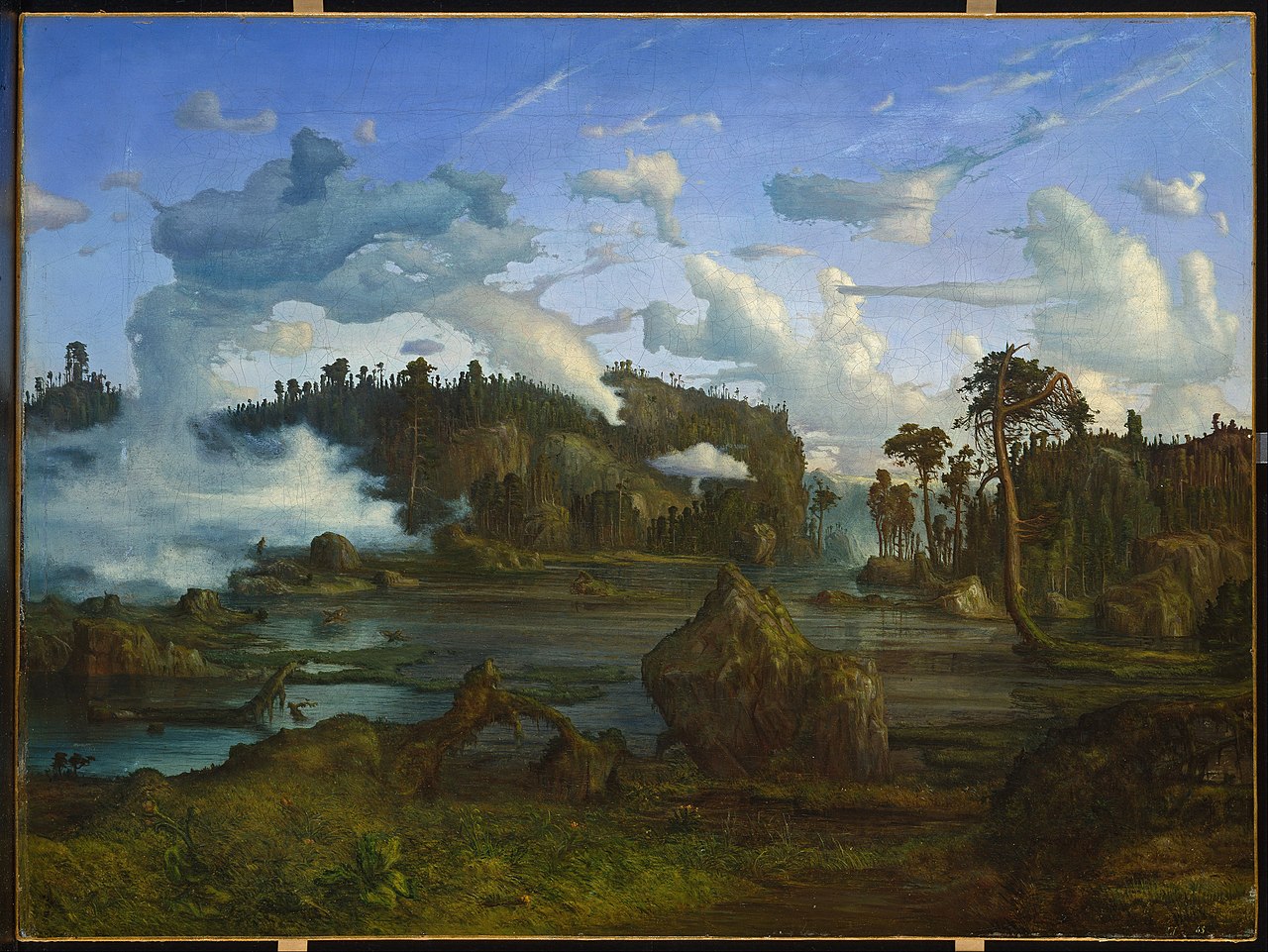I have enjoyed reading
Romantic Moderns, which has much to say about the revival of interest in the English landscape before and during the war.
Alexandra Harris acknowledges her debt to Kitty Hauser, whose
Shadow Sites: Photography, Archaeology and the British Landscape, 1927-1955 begins with a discussion of the 'topophilia' characteristic of writers and artists in this period. In 1947 Auden defined this topophilia as having 'little in common with nature love. Wild or unhumanized nature holds no charms for the average topophil because it is lacking in history' (cf. Sebald vs. Mabey in my recent 'After Nature'
post). What unites 'topophils', Hauser writes, 'is an interest, sometimes amounting to an obsession, with local landscapes marked by time, places where the past is tangible. For some, such as Betjeman, John Piper and Geoffrey Grigson, this topophilia - as Auden suggests - is eclectic, including medieval churches, Gothic and mock Gothic architecture, Regency terraces and ancient sites. Some topophils of this generation, such as Paul Nash with his fascination with the
genius loci, made atmospheric prehistoric landscapes a particular focus. Others, like painter Graham Sutherland, were attracted to scarred nature and geological vistas. In the Four Quartets, T. S. Eliot looked for redemption and history in an English village: 'History is now and England'. And with an eye to continental Surrealism, photographers and film makers including Bill Brandt, Humphrey Jennings, Michael Powell and Emeric Pressburger found in pockets of the British landscape curious and moody survivals from the past.'
All of these writers and artists feature in
Romantic Moderns, along with others less directly concerned with landscape but whose work looked nostalgically at a fast vanishing world of country houses and village traditions. The Bright Young Things, for example - Evelyn Waugh, Cecil Beaton, Rex Whistler, the Sitwells - whose work has never appealed much to me, are discussed alongside Eric Ravilious and Edward Bawden in an interesting chapter on the 1930s Georgian Revival. Kathryn Hughes in
The Guardian, praises the book's 'tactful generosity towards people and places, sights and sounds, that have tended to get written off as embarrassing or just plain wrong. Never has this seemed more important than now, as we work through our own complicated millennial feelings about the romance of the past. Thanks to Harris it no longer seems entirely shaming to admit to a secret Cath Kidston habit. Taking tea in the stable block of a National Trust property becomes a dignified activity, rather than something to pretend to find a chore.'
I'm no stranger to National Trust tea shops but have always been constrained in where I could go by not owning a car. Motorists of the 1930s were encouraged to discover the landscape of Britian by the posters for Shell-Mex designed by artists like Vanessa Bell, Graham Sutherland and Frank Dobson (whose depiction of the Cerne Abbas giant is reproduced in
Romantic Moderns - the giant's most famous feature is obscured by the shadow of a strategically placed cloud). In 1934 Cyril Connolly titled his review of an exhibition of Shell-Mex commissioned artwork 'The New Medici'. He observed that it was 'not the awe-inspiring or exceptional which now seems important, but what is most cheerful and genuine in our countryside - England is merry again - farewell romantic caves and peaks, welcome the bracing glories of our clouds, the cirrus and the cumulus, the cold pastoral of the chalk.' The
Shell County Guides that John Betjamen commissioned also looked beyond the obvious - a fact typified by John Piper's
Oxon which deliberately excluded the city of Oxford. As Alexandra Harris says, 'Piper's Oxfordshire is not a land of touristic sensation. Old England is allowed to be almost a modern lived-in country. A photograph of clustered advertisements which would have troubled purist preservationists is captioned 'a tree of knowledge', and an oval photograph with faded edges evokes nostalgia only to affront it with a big sign advertising a 'super cinema.'' It almost sounds like a journey through Oxfordshire's edgelands, prompting the thought that we could have a new series of county guides for the psychogeographically inclined pedestrian, written by Iain Sinclair, Rachel Lichtenstein, Patrick Keiller and so on.
Romantic Moderns won the Guardian First Book Award and Alexandra Harris can be seen talking about it on the
Guardian website. Thames and Hudson have now signed her up for two more books - a short biography of Virginia Woolf and another one,
The Weather Glass, which I am looking forward to as it will
apparently 'explore the British preoccupation with the weather, from Beowulf onwards'. In
Romantic Moderns these interests come together in a chapter called 'The Weather Forecast', where there is a discussion of Woolf's unfinished history of literature, 'Reading at Random'. She makes this sound fascinating: it was to be a book 'shaped by views from windows and stretches of country ... a passionate exercise in literary geography.' Harris argues that the twentieth century threatened to alienate people from the weather, as Modernist art looked beyond the incidentals of atmosphere to uncover clear cut shapes and colours. She contrasts this with the rain-filled lithographs of her book's other main protagonist, John Piper (of whose drawings of Windsor George VI said, "You seem to have very bad luck with your weather, Mr. Piper"). Working outside, Piper 'loved the odd splashes that arrived unexpectedly in his paintings.' These blots have the effect of confirming 'the allegiance between art and the world beyond the painting. And, like the sand found in a half-read book, they are the souvenirs of a time and place, nature's signature added next to that of the artist.'





























